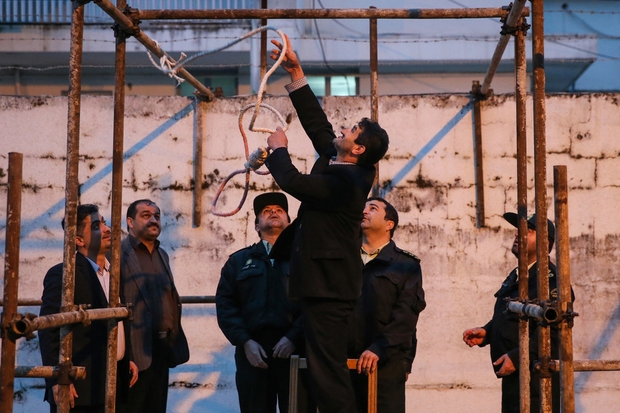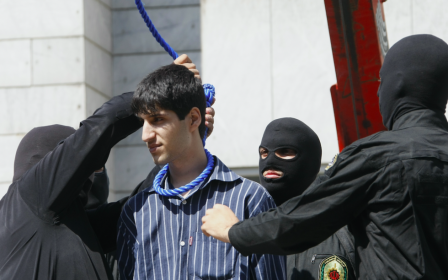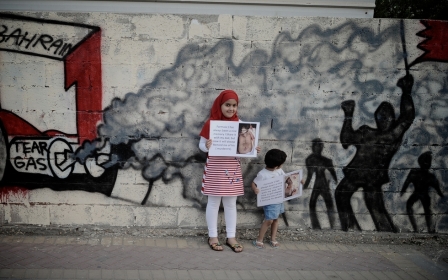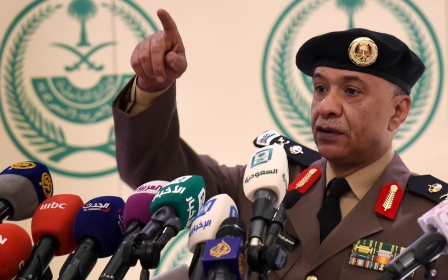Iran and Saudi Arabia execute more than 350 people in six months

Iran and Saudi Arabia have between them executed more than 350 people in the first half of 2016, according to statistics released by rights groups this week.
Iran is second globally only to China in executing their own citizens, and is far ahead of Saudi Arabia which occupies third place.
Iran executed at least 250 people in the first six months of the year, according to a report released on Tuesday by the Norway-based group Iran Human Rights.
In the same period Saudi Arabia executed 108 people, according to a report released on Wednesday by Human Rights Watch.
With a population of nearly 80 million, as opposed to Saudi's less than 30 million, Iran may have a much higher total number of executions but their per capita rate of state-sanctioned killings is slightly lower than their regional rival.
The number of people killed in Iran has also fallen dramatically, year on year.
In the first seven months of 2015 Iran executed more than 700 people, and by the end of the year at least 969 were killed – the highest toll in more than 25 years.
Iran Human Rights spokespman, Mahmood Amiry-Moghaddam, however said there was no indication that the reduction was due to a change of policy.
"The numbers are lower than last year most probably because of the parliamentary elections in February and March and Ramadan in June,” he said.
Amiry-Moghaddam said the international community should “put the death penalty… on top of their agenda in bilateral talks with the Iranian authorities”.
Nearly half of those executed in Iran this year faced drug-related charges, while 39 percent were put to death after being convicted of murder.
Amnesty International raised concerns earlier this year about juveniles being executed in the Islamic Republic - girls as young as nine and boys aged 15 can be executed in the country.
The UN reported in January that at least 160 juveniles were on death row at the start of the year - it is not known if any of the juveniles are among the 250 reported executions so far in 2016.
Iran Human Rights reported that 19 people have been hanged in public spaces so far this year.
Due to the fact Iranian authorities do not report all executions that take place, Iran Human Rights said the number of people put to death may be much higher than reported.
While Iranian executions have fallen in 2016, regional rival Saudi Arabia’s use of the death penalty has been maintained this year, although Iran remains far ahead in their total number of executions.
Human Rights Watch reported that of the 108 people executed by Saudi authorities this year, 47 were convicted of murder, 13 were drug smugglers, and one was convicted of rape.
Close to half of Saudi’s total executions this year took place in one day on 2 January, when 47 people were killed for terrorism convictions.
Among those executed in January was Shia cleric Sheikh Nimr al-Nimr, whose killing sparked angry protests in Iran, leading to the ransacking of the Saudi embassy there.
Others killed in the group of 47, as revealed by Middle East Eye, included prisoners suffering from mental illness and individuals detained as juveniles.
Human Rights Watch said the kingdom was “on track” to match the 158 executions it carried out in 2015, while it has already surpassed the total of 88 people killed in 2014.
The New York-based watchdog criticised continued use of the death penalty by Saudi authorities, warning that it does not reduce crime in the kingdom.
“Executions are never the answer to stopping crime, especially when they result from a flawed justice system that ignores torture allegations,” Sarah Leah Whitson, Middle East director at Human Rights Watch, said in a statement.
“There is simply no excuse for Saudi Arabia’s frequent use of the death penalty for non-violent drug crimes.”
Middle East Eye propose une couverture et une analyse indépendantes et incomparables du Moyen-Orient, de l’Afrique du Nord et d’autres régions du monde. Pour en savoir plus sur la reprise de ce contenu et les frais qui s’appliquent, veuillez remplir ce formulaire [en anglais]. Pour en savoir plus sur MEE, cliquez ici [en anglais].




